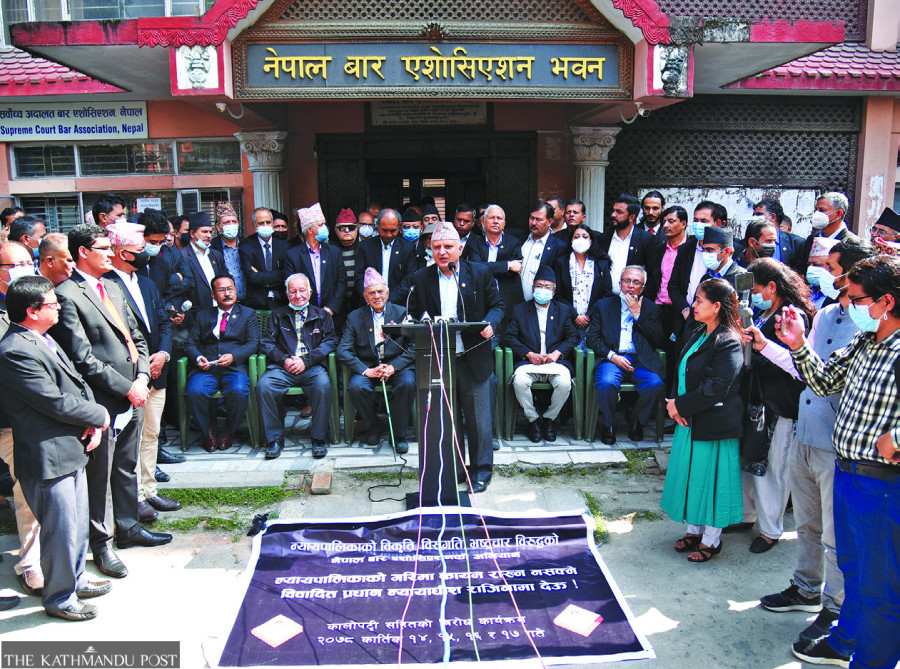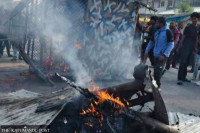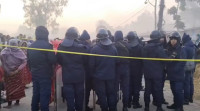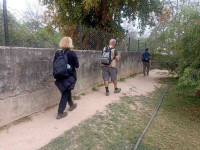National
Stalemate persists in top court as judges sense chief justice not serious on exit
Protesting lawyers and justices, saying Rana’s proposal is unclear, are working on counter terms of negotiation.
Tika R Pradhan
As the country takes a three-day Tihar break starting Thursday, the ongoing deadlock in the judiciary resulting from a confrontation between the justices and Chief Justice Cholendra Shumsher Rana is set to linger given the hardening positions of both parties.
While the justices have stopped work in protest, the Nepal Bar Association, which has so far limited its protest to the Supreme Court premises, is set to start a second phase of more stringent struggle after the festival. It plans to organise protests in Kathmandu and take them nationwide.
The first phase of the association’s protests will conclude on Wednesday. According to its office-bearers, they will come up with a stronger protest plan after Tihar to pile pressure on the chief justice to step down.
“We will discuss the modality of the second phase of struggle with all our district committees on November 7 and 8 before taking a decision,” said Bar chair Chandeshwar Shrestha.
Bar General Secretary Lilamani Poudel said they will plan protests as per the suggestions of the majority of 180 chairs and secretaries of 90 lawyers’ units across the country.
“So far our struggle is limited to the Supreme Court. After Tihar, we will take it to the whole of Kathmandu Valley that includes Supreme Court and Patan High Court bar units and district bar units,” said Poudel. “Then we will make our protests nationwide and continue until the chief justice steps down.”
Bar authorities have said they were unaware of what transpired in the meetings between Chief Justice Rana and the three justices involved in negotiating his “graceful exit”. They added any deal between the justices cannot be implemented without their consent.
As of Tuesday, Rana has not elaborated on his proposal of ‘graceful’ exit as the negotiating justices have said he is not ready to quit anytime soon and is ready to discuss ways for his exit outlined in the constitution.
“We are discussing his proposal, which is unclear. So we will counter the proposal by preparing alternative proposals,” a justice said, requesting anonymity. “Though he has been saying he is flexible, justices are not very hopeful.”
According to another justice, Rana has not expressed his intention clearly and has sought time to bring reforms to the judiciary.
The justices who boycotted hearings on Tuesday are considering hearing habeas corpus petitions on Wednesday if the chief justice does not assign them other cases, according to one of the justices.
Earlier this week, the justices, following a public outcry, had decided to hear habeas corpus petitions only. On Monday they heard a few cases.
The justices have been in protest since last week demanding resignation of the chief justice accusing him of irregularities in assigning cases to the judges.
On Sunday, Chief Justice Rana had sent a message to the justices through justice Manoj Kumar Sharma that he was ready for a ‘graceful exit’.
The same day, the justices assigned Anil Kumar Sinha, Sapana Pradhan Malla and Manoj Kumar Sharma to find out the chief justice’s intentions and the modality of his exit.
On Monday, 16 justices present at the court had joined the hearing of habeas corpus after Rana had duly followed their demands. There are 20 justices in the Supreme Court including the chief justice. Three justices are on leave.
“We had clearly told the chief justice that the justices would be forced to avoid hearing if he refused to abide by our proposals but two of the justices were allocated cases related to banking fraud. Therefore, we decided to boycott the benches today,” said one of the justices. “It’s all because of the chief justice.”
The chief justice had allocated six benches to 10 justices—four division benches of Dipak Kumar Karki and Prakash Man Singh Raut; Mira Khadka and Hari Krishna Karki; Bam Kumar Shrestha and Kumar Chudal; Tej Bahadur KC and Kumar Regmi, besides two single benches of Prakash Kumar Dhungana and Sushmalata Mathema.
However, his move to allocate four cases related to banking fraud besides one habeas corpus petition to Mira Khadka and Hari Krishna Karki’s bench irked the protesting justices, leading to the stalemate.
On Monday Chief Justice Rana had presented his ‘graceful exit’ plan to Sinha, Pradhan Malla and Sharma. The three justices briefed the proposal to the justices during a meeting on Tuesday.
According to the justices, Chief Justice Rana had proposed that the justices discuss ways for his exit in line with the constitution. As per the constitution, there are only two ways for the exit of a chief justice— impeachment or the age limit of 65 years.
Though the political parties have so far remained mere spectators, some leaders have started to speak out.
“The chief justice recently said he would exit but he should be given the opportunity for a graceful exit. I have said earlier that the sooner he leaves the better,” said Ram Chandra Paudel, senior leader of the Nepali Congress, while addressing the party's function in Hetauda. “More delays will bring him disgrace.”
But the concrete voice of the ruling coalition of five parties is expected only after Prime Minister Sher Bahadur Deuba, who is also the president of Nepali Congress, returns from Glasgow, Scotland.




 12.12°C Kathmandu
12.12°C Kathmandu













%20(1).jpg&w=300&height=200)

